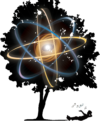“Sacred Awe” aims to transport the audience on a transformative voyage, leaving them with a renewed sense of grounding, contentment, and a deep appreciation for the delicate beauty of our planet. Through the universal language of music, this symphonic work seeks to evoke empathy and inspire a collective commitment to safeguarding our shared home – Earth.
Movement 1 – “Build and Launch”
This spirited movement pays homage to the brilliance of spacecraft engineering and the dedicated individuals who devote their lives to its pursuit. Commencing at 3:11 in this mock-up recording (below), an ever-rising melody emerges from the basses and low winds, symbolizing the ascent of a manned rocket. As the music soars to its ecstatic apex, the orchestra celebrates this momentous achievement with a triumphant cadence highlighted by bold brass flourishes.
Movement 2 – “Weightless”
A brief yet introspective interlude, “Weightless” is a Deep Listening® piece that reflects the disorienting experience of space travel. Each musician is encouraged to envision a star and express it through unique and ethereal sounds, transcending the confines of tonality and gravity. The result is a shimmering tapestry of glistening tones, immersing the audience in the boundless cosmos.
Movement 3 – “The Earth!”
In this grand finale, the music captures the overwhelming moment of witnessing our planet from the perspective of space, embracing the transformative power of the Overview Effect. The tempo and key of this movement, “Earth!” is adapted to match the present Schumann Resonance, a natural magnetic field oscillation covering our planet since life began. When the SR is strong, our HRV (heart rate variability) goes up, fostering integration between mind, heart, and body and creating feelings of well-being. “Earth!” will bring these healthy effects to the orchestra and audience by matching the present SR frequency with the music. The bass drum will quietly play it throughout, creating a solid presence. The basses and a low-frequency synthesizer will play the successive octaves as a constant pedal tone. Up to the highest piccolo note, the entire key of the orchestra is in tune with the SR, promoting feelings of solidity, presence, and well-being, and, by listening, everyone’s brain transforms the acoustic energy into electromagnetic energy (called ‘entrainment’). Musical listening integrates different parts of us that often drift apart: mind, imagination, awareness, body, and spirit. The magnetic fields created by everyone’s hearts will further amplify the Schumann Resonance frequency, bringing everyone into synchronization (common in musical performances, sporting events, etc.). The music envelops the listeners, inviting them to bask in Earth’s majestic splendor and fostering a profound connection to the present moment.

Sacred Awe

“Sacred Awe” is the fruit of collaboration between the Central Florida Composers Forum and the Florida Symphony Youth Orchestras , thanks to the vision and work of CF2 President Dr. Charles Griffin and Music Director Dr. James Welsch.
What might a composers’ group and a youth symphony give to each other? The older CF2 composer mentors musicians in the FSYO who are young composers. My mentee, Alex Hynds, was a cellist while a high schooler in Symphonic Orchestra ensemble, now a freshman at the University of Central Florida. This brilliant young man could just as easily mentor me in computer sciences and 3d animation. He doesn’t seem to know that he’s doing the unheard-of: writing a 17-minute story, animating and rendering it, AND writing the entire score for a full symphonic orchestra! AND he’s creating it at a high level! All of this while pursuing a double major and interning at Limbitless Solutions
Relevant Research
Synchronization of Human Autonomic Nervous System Rhythms with Geomagnetic Activity in Human Subjects
Rollin McCraty, Mike Atkinson, Viktor Stolc, Abdullah A. Alabdulgader, Alfonsas Vainoras and Minvydas Ragulskis
Received: 3 June 2017; Accepted: 5 July 2017; Published: 13 July 2017
Abstract: A coupling between geomagnetic activity and the human nervous system’s function was identified by virtue of continuous monitoring of heart rate variability (HRV) and the time-varying geomagnetic field over a 31-day period in a group of 10 individuals who went about their normal day-to-day lives. A time series correlation analysis identified a response of the group’s autonomic nervous systems to various dynamic changes in the solar, cosmic ray, and ambient magnetic field. Correlation coefficients and p values were calculated between the HRV variables and environmental measures during three distinct time periods of environmental activity. There were significant correlations between the group’s HRV and solar wind speed, Kp, Ap, solar radio flux, cosmic ray counts, Schumann resonance power, and the total variations in the magnetic field. In addition, the time series data were time synchronized and normalized, after which all circadian rhythms were removed. It was found that the participants’ HRV rhythms synchronized across the 31-day period at a period of approximately 2.5 days, even though all participants were in separate locations. Overall, this suggests that daily autonomic nervous system activity not only responds to changes in solar and geomagnetic activity, but is synchronized with the time-varying magnetic fields associated with geomagnetic field-line resonances and Schumann resonances.
Keywords: heliobiology; geomagnetic field; HRV; Schumann resonance; heart rate variability; solar wind; ANS; autonomic nervous system; cosmic rays; solar radio flux
Theta band oscillations reflect more than entrainment: behavioral and neural evidence demonstrates an active chunking process
Xiangbin Teng, Xing Tian, Keith Doelling and David Poeppel
© 2017 Federation of European Neuroscience Societies and John Wiley & Sons Ltd
Abstract: Parsing continuous acoustic streams into perceptual units is fundamental to auditory perception. Previous studies have uncovered a cortical entrainment mechanism in the delta and theta bands (~1–8 Hz) that correlates with formation of perceptual units in speech, music, and other quasi-rhythmic stimuli. Whether cortical oscillations in the delta-theta bands are passively entrained by regular acoustic patterns or play an active role in parsing the acoustic stream is debated. Here, we investigate cortical oscillations using novel stimuli with 1/f modulation spectra. These 1/f signals have no rhythmic structure but contain information over many timescales because of their broadband modulation characteristics. We chose 1/f modulation spectra with varying exponents of f, which simulate the dynamics of environmental noise, speech, vocalizations, and music. While undergoing magnetoencephalogra- phy (MEG) recording, participants listened to 1/f stimuli and detected embedded target tones. Tone detection performance varied across stimuli of different exponents and can be explained by local signal-to-noise ratio computed using a temporal window around 200 ms. Furthermore, theta band oscillations, surprisingly, were observed for all stimuli, but robust phase coherence was preferentially displayed by stimuli with exponents 1 and 1.5. We constructed an auditory processing model to quantify acoustic information on various timescales and correlated the model outputs with the neural results. We show that cortical oscillations reflect a chunking of segments, > 200 ms. These results suggest an active auditory segmentation mechanism, complementary to entrainment, operating on a timescale of ~200 ms to organize acoustic information.
Reverse effect of home‐use binaural beats brain stimulation
Michal Klichowski, Andrzej Wicher, Agnieszka Kruszwicka & Roman Golebiewski
©2023 www.nature.com/scientificreports
Abstract: Binaural beats brain stimulation is a popular strategy for supporting home‐use cognitive tasks. However, such home‐use brain stimulation may be neutral to cognitive processes, and any intellectual improvement may be only a placebo effect. Thus, without belief in it, it may bring no benefits. Here we test 1000 individuals at their homes as they perform a two‐part fluid intelligence test. Some took the second part listening to binaural beats, while others took it in silence or listening to other sounds. The binaural beats group was divided into three subgroups. The first one was informed that they would listen to sounds that improve the brain’s work, the second that neutral sounds, and the third that some sounds the nature of which was not defined. We found that listening to binaural beats was not neutral, as it dramatically deteriorated the score irrespective of the condition. Silence or other sounds had no effect. Thus, home‐use binaural beats brain stimulation brings reverse effects to those assumed: instead of supporting the effectiveness of cognitive activities, it may weaken them.




